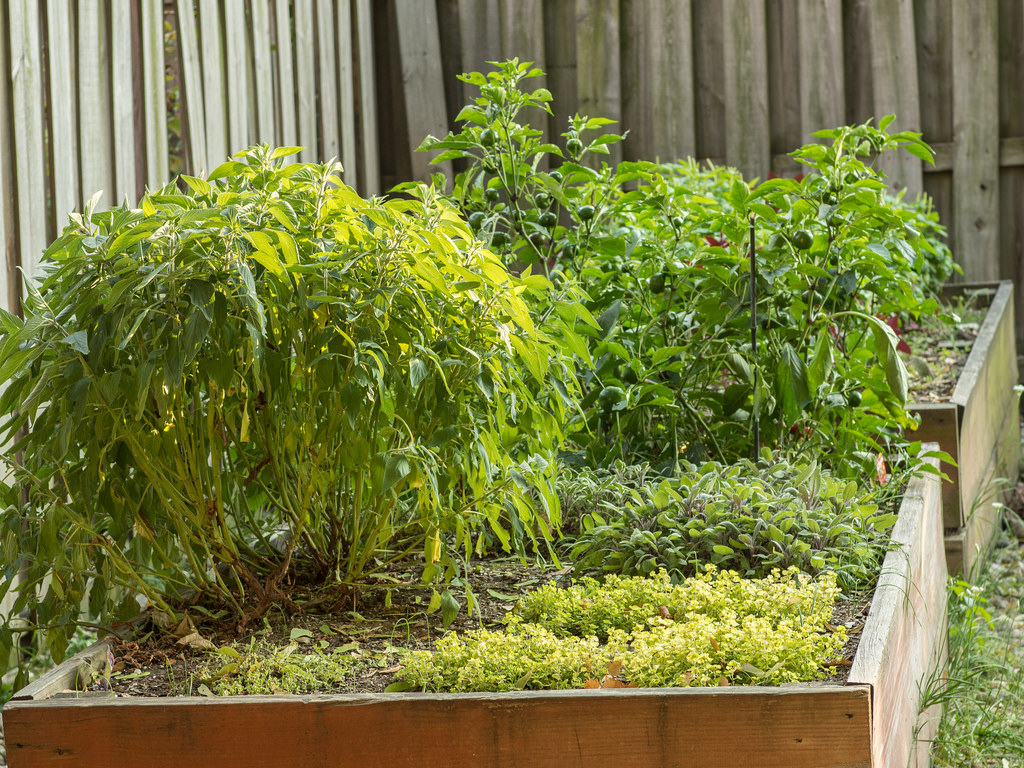By Victoria Gabrielle Bravo, University of Arizona ISPP dietetic intern
Starting an herb garden in your own home is easier than once thought. Having fresh herbs to use will greatly improve the health and taste of all dishes. Using fresh herbs is a great way to add flavor to your cooking at home, but there are also many health benefits. Using fresh herbs usually helps with cutting down on sodium intake. Excessive sodium intake can be dangerous to your health, even if you do not have cardiovascular disease. Too much sodium, or salt, can lead to high blood pressure, stroke, and other chronic diseases. By replacing salt with fresh herbs, you are reducing your risk. By simply using herbs to season dishes, you are adding various nutrients to your food as well. Herbs are a great source of vitamins A, C, E, and K. Many herbs also act as antioxidants and have anti-inflammatory properties.

Follow these steps to create an herb garden:
- Choose a space near your kitchen.
- Prepare the space by loosening the soil.
- Dig holes as appropriate to each herb.
- Label herbs.
- Plant flowering plants (zinnias are a great flowering plant)
- Water as indicated by the individual herb.
| Herb | Spacing | Light preference | Soil conditions | Germination | Time to harvest |
| Basil | 12”-18” | Full sun | Rich, moist, well drained | 5-10 days | 10 weeks |
| Cilantro | 4”-12” | Full sun, light shade | Well-drained | 7-10 days | 3-4 weeks |
| Oregano | 12” | Full sun | Well-drained | 7-14 days | 11-13 weeks |
| Parsley | 12”-18” | Part shade | Rich, moist | 14-30 days | 10-11 weeks |
| Rosemary | 18”-36” | Full sun | Light, well drained | 14-21 days | 11-14 weeks |
| Tarragon | 18” | Sun, part shade | Well-drained | 10-14 days | 11 weeks |
| Thyme | 6”-8” | Sun, part shade | Well-drained | 14-21 days | 13-14 weeks. |
| Herb | Nutrients | When to use |
| Basil | Vitamin A, Vitamin K, Vitamin C, calcium, magnesium, iron, potassium | Cheese, salads, vegetables |
| Cilantro | Phosphorus, calcium, magnesium, potassium, vitamin A, vitamin B, vitamin C, vitamin K | Salads, salsas |
| Oregano | Vitamin A, vitamin C, vitamin E, vitamin K, fiber, folate, iron, magnesium, vitamin B6, calcium, potassium | Italian dishes, cheese |
| Parsley | Antioxidants, anti-inflammatories | Fish, vegetables, poultry, salads, soup |
| Rosemary | Vitamin C, vitamin A, magnesium, iron, zinc, calcium | Beef, soup, bread |
| Tarragon | Manganese, iron, magnesium, copper, potassium, zinc (helpful as an antioxidant) | Fish, poultry, salads, soup, vegetables |
| Thyme | Vitamin A | Fish, cheese, vegetables |
For more fun and interesting articles check out the Fill Your Plate blog, where new articles are posted every week.

